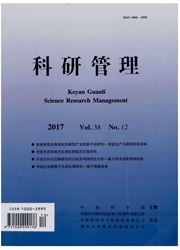

 中文摘要:
中文摘要:
本文以华为、三星为样本,基于USPTO专利数据中的专利权人与专利发明人信息提出两个研发国际化指标,并利用该指标从组织模式和空间-领域分布模式两方面对比分析了两公司研发国际化模式的演化。结果表明:(1)三星采用"以组织或人员为纽带的研发能力提升"模式,华为采用"以资金为纽带的技术获取"模式,两企业都朝着"技术获取和研发能力提升两者并重"的模式发展。(2)在空间分布上,三星实现了研发合作与市场进入的统一,华为的研发合作与市场则存在空间错位;在领域分布上,三星的国际研发涵盖ICT的所有子领域,华为则主要集中在电信、计算机及办公用品两个子领域。在此基础上,阐明本研究对后发企业研发国际化模式和策略选择的政策启示。
 英文摘要:
英文摘要:
Taking Huawei and Samsung as examples,this paper presents two RD international indicators that is based on the information of inventor and applicant addresses in the USPTO patent data,and use the indicators to analyze the evolving pattern of their RD internationalization in two ways: organizational pattern and space- field distribution pattern. The results show that:( 1) Samsung chooses"RD capabilities development mode based on talents or organizations",while Huawei chooses"technology- acquiring mode based on capital". Both modes are in the evolution to the mode that"focuses on both RD capabilities development and technology- acquiring"; and( 2) Regarding space distribution,Samsung realizes the coordination of RD international collaboration with market access,while there is a spatial mismatch in Huawei. As for the technology field distribution,Samsung's international RD covers all subfields of ICT,while Huawei concentrates mainly on two subfields of telecommunications,computer and office supplies. On this basis,this paper proposes policy implications for the pattern and strategy selection of latecomer enterprises' RD internationalization.
 同期刊论文项目
同期刊论文项目
 同项目期刊论文
同项目期刊论文
 期刊信息
期刊信息
